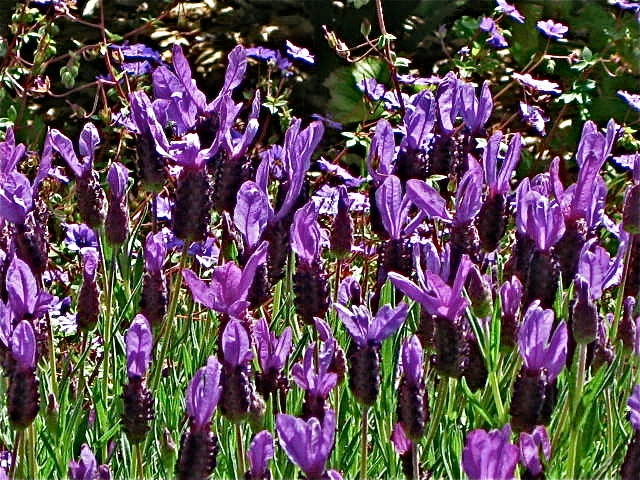Lavender
By Lee Oliphant UCCE Master Gardener
Spanish Lavender
Lavandula stoechas
Planting zone: hardy in zones 7 to 9.
Size: grows to 3 feet in height and width.
Bloom season: spring to fall.
Exposure: full sun.
Pruning needs: deadheading spent blooms will prolong blooming season. Can be sheared with a hedge clipper at the end of the season or at time of harvest. Annual pruning of 2/3 of new growth will encourage thick, dense growth.
Water needs: Lavender is a drought tolerant plant. Once established, lavender will need little supplemental watering.
Snapshot:
Of all the drought tolerant, deer resistant Mediterranean plants that thrive on the Central Coast, lavender (Lavandula) is one of the most popular. Its blossoms come in blue, mauve, violet, and purple that attract bees and can be used for potpourri and other scented products.
Lavender has over 30 species. Among them are many varieties and cultivars. They are considered dwarf woody shrubs, evergreen, perennial, and in the same plant family as mints, sages, and thymes.
The most common species of lavender are English (Lavandula augustifolia), French (L. dentate) and Spanish (L. stoechas). Spanish lavender is colorful and blooms along the coast nearly year-round. It matures into a thick bushy shrub and is often planted along paths to scent the air as walkers pass by. It is an easy-care plant that resists insect pests and diseases.
Ideal conditions for lavender include well-drained loamy soil and a dry, sunny location. Lavenders are susceptible to root-rot caused by overwatering so the soil moist only until established. Fertilize lightly in the spring with fish emulsion or a time release fertilizer.
With the proper care and environment, Spanish lavender can live for 7-8 years before becoming woody and needing replacement.
